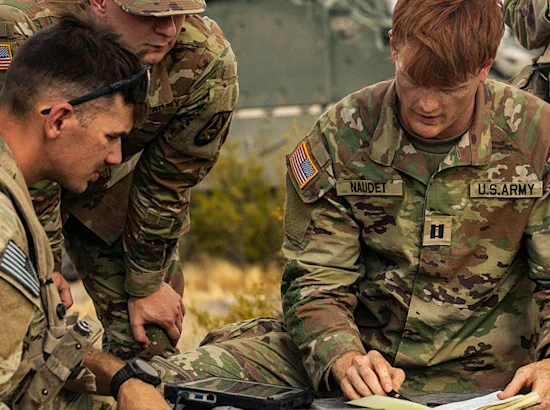Digital engineering practices are revolutionizing the development of Department of Defense systems. A thoughtful and effective digital engineering approach enables stakeholders to better collaborate, see potential outcomes, and make informed decisions before any physical work begins.
Among the myriad applications for digital engineering within the DoD, three high-value use cases stand out: cybersecurity, product lifecycles and mission engineering. This piece examines mission engineering.
With today’s engineering complexity, precise design tools yield tremendous amounts of interrelated data over a product’s lifecycle. This increase in product data causes traditional linear processes to become unmanageable. Requirements change, tests can fail, budgets and schedules often shift. However, a model-driven framework can be used to evaluate potentially expensive design alternatives in a high-quality simulation environment. This framework leads to faster, more cost-effective designs for mission platforms, and it results in more realistic simulations that make teams better suited to support the mission.
Creating Richer, Real-Word Scenarios On the Fly
Today, GDIT teams are working with customers to build on these benefits using advanced modeling and simulation techniques that are both dynamic and more reflective of real-world conditions.
Take the example of unmanned aerial vehicles, or UAVs. Testing military equipment via simulation is not new. But the ability to add extra depth to what and how we test – and doing so in a way that generates data that we can act on in real-time – is.
For example, we can use digital engineering to create a testing simulation that is more closely mirrored to real, in-theater scenarios. This goes beyond operating on fixed parameters like “fly on this search pattern” or “return when the device temperature reaches a certain point.” Instead, we can monitor the UAV’s overall flight performance. We can direct the device to go look for a target, rather than to fly a specific route. We can expand or alter the search radius while the device is in flight. We can capture temperature or weather data as the UAV encounters it and adjust the simulation accordingly. And we can do it all at once.
All these capabilities add dimension and depth to the simulation. We’re taking in data in real-time and adjusting to it – both for the purposes of the simulation and the design. Design teams can also utilize our simulation performance data and modify design elements or components accordingly.
Real-Time Feedback Leading to Real-Time Adjustments
We’ve already seen this type of simulation result in design changes that mitigate problems. A printed circuit board was recently redesigned following a simulation that revealed an overheating issue. The simulation uncovered the problem and automatically generated a redesign work order, with simulation data sent to the engineering team. The data showed that an airflow problem was resulting in the overheating issue, and the engineers developed a way to move components of the circuit board around to create better airflow and, thus, eliminate overheating on repeat simulations.
Co-Simulations Enable More Responsive Capabilities
To conduct these types of dynamic simulations, we built a multi-domain system that allows for multiple co-simulations to occur at once. We use distributed processing, digital threads and navigable relationships – data relationships that are mapped to any data element, including requirements – to bring information together so that it can be instantly and dynamically analyzed and acted upon. This means instead of prescribing what we want the UAV to do, we can enable it to be reactive to its environment and the circumstances it encounters.
And this is how simulations should be.
They should mirror real-world conditions as closely as possible and enable mission partners to create the best possible technology for the mission. At GDIT, we take pride in working collaboratively with our customers and building new ways – like applying digital engineering practices to modeling and simulations – to make that collaboration possible, easier and more effective. In our experience, this is what enables teams to spark true digital transformations, to reduce risk in complex designs, and to transform and accelerate the mission.






